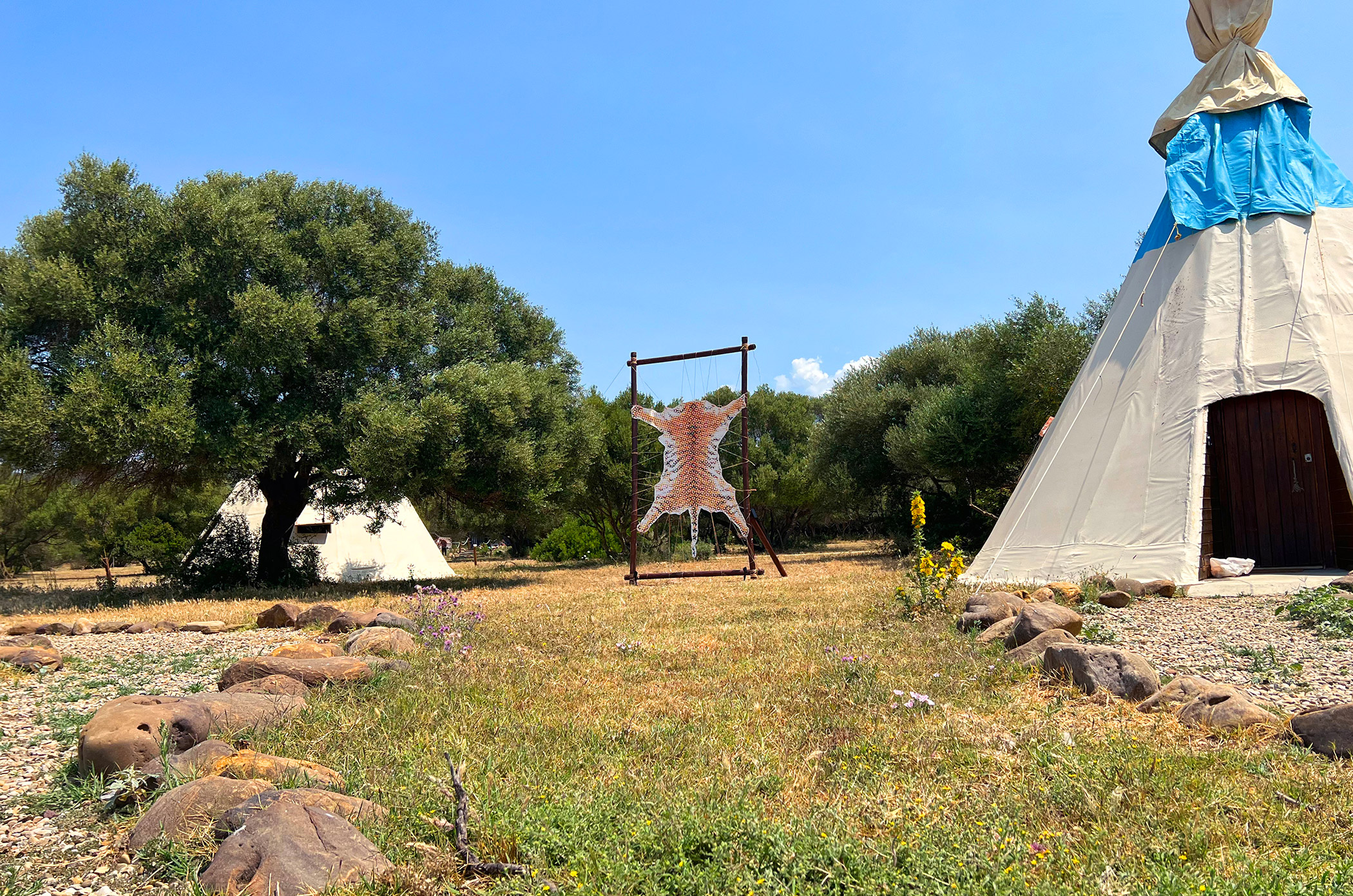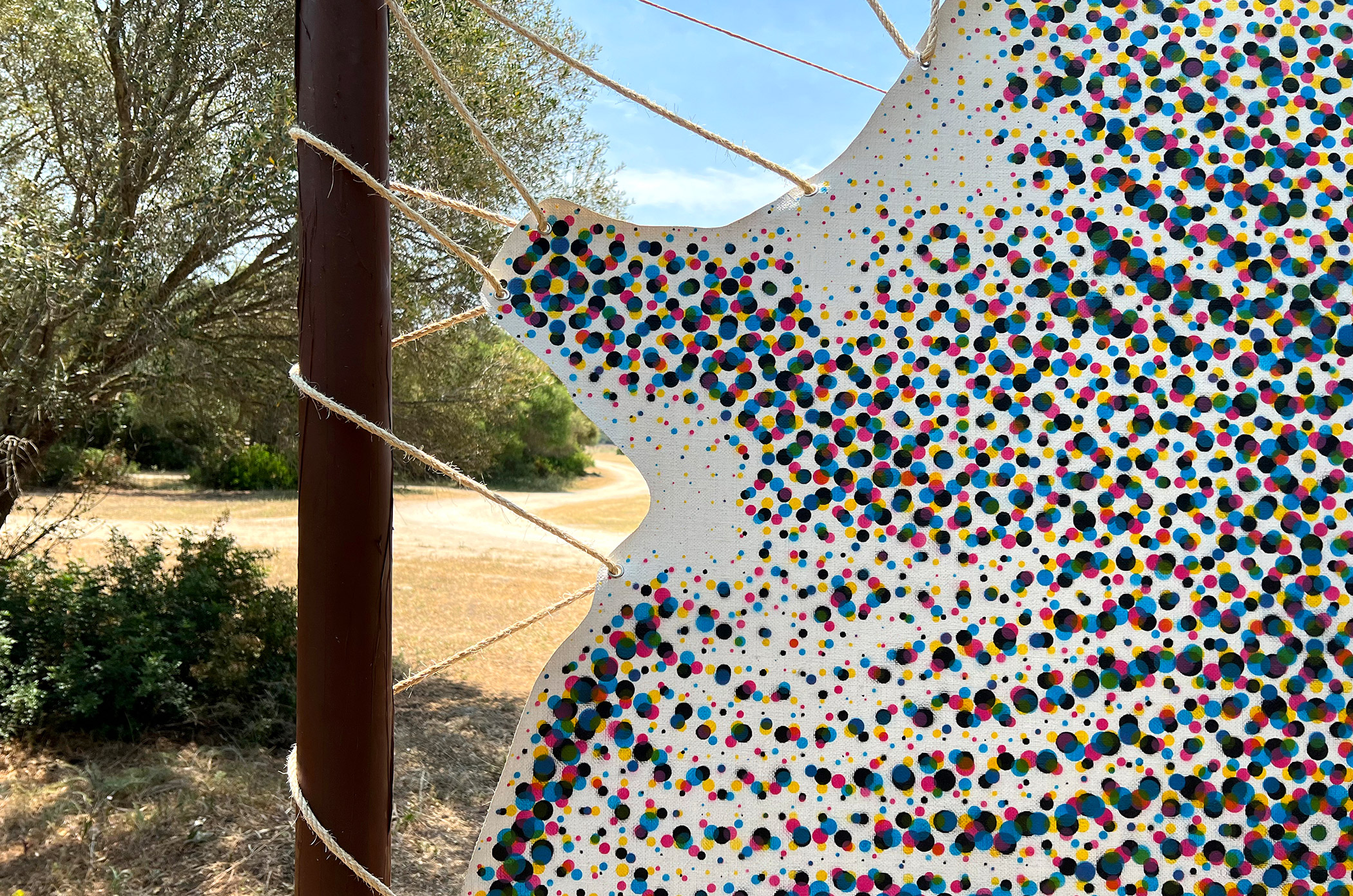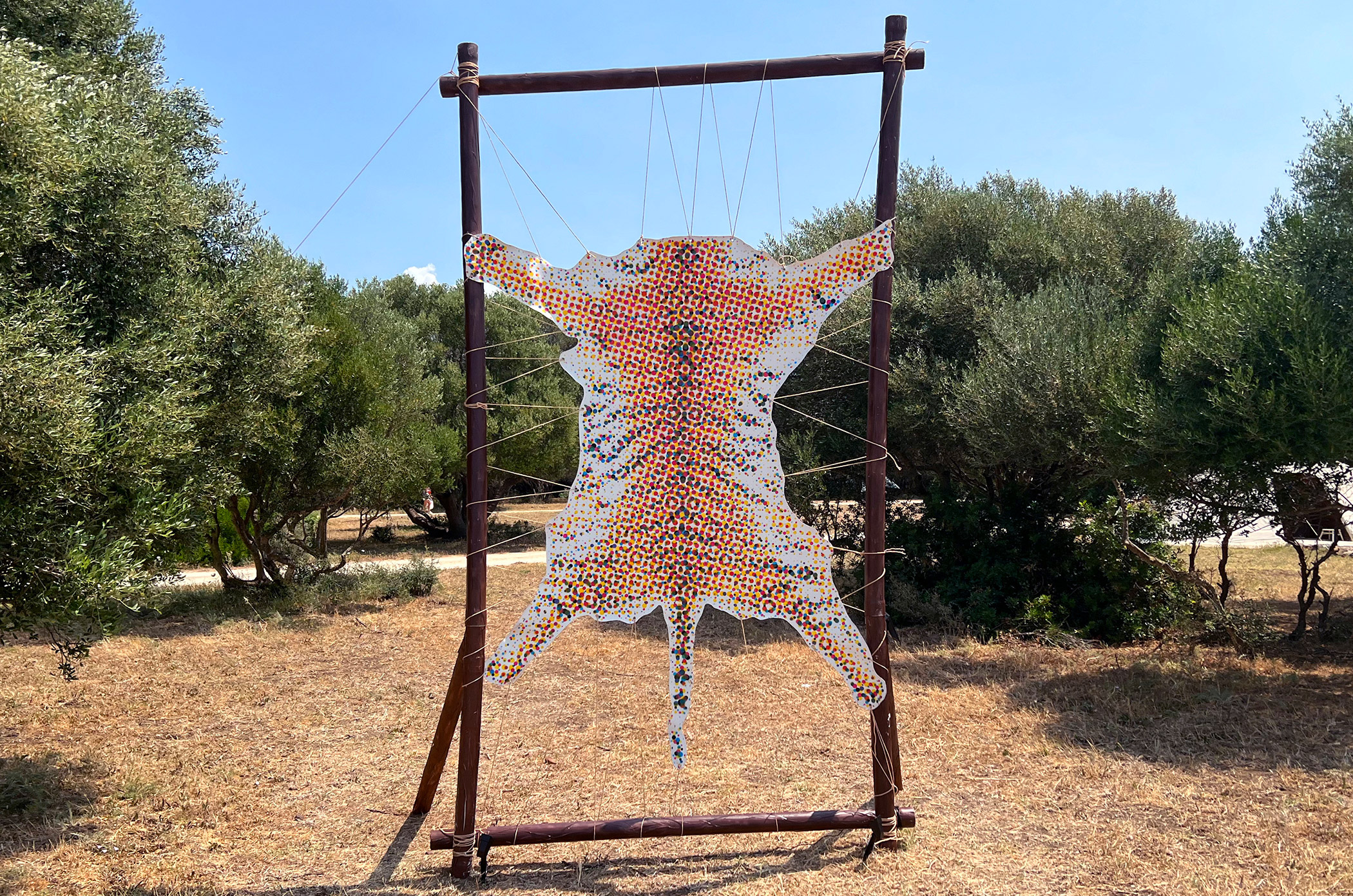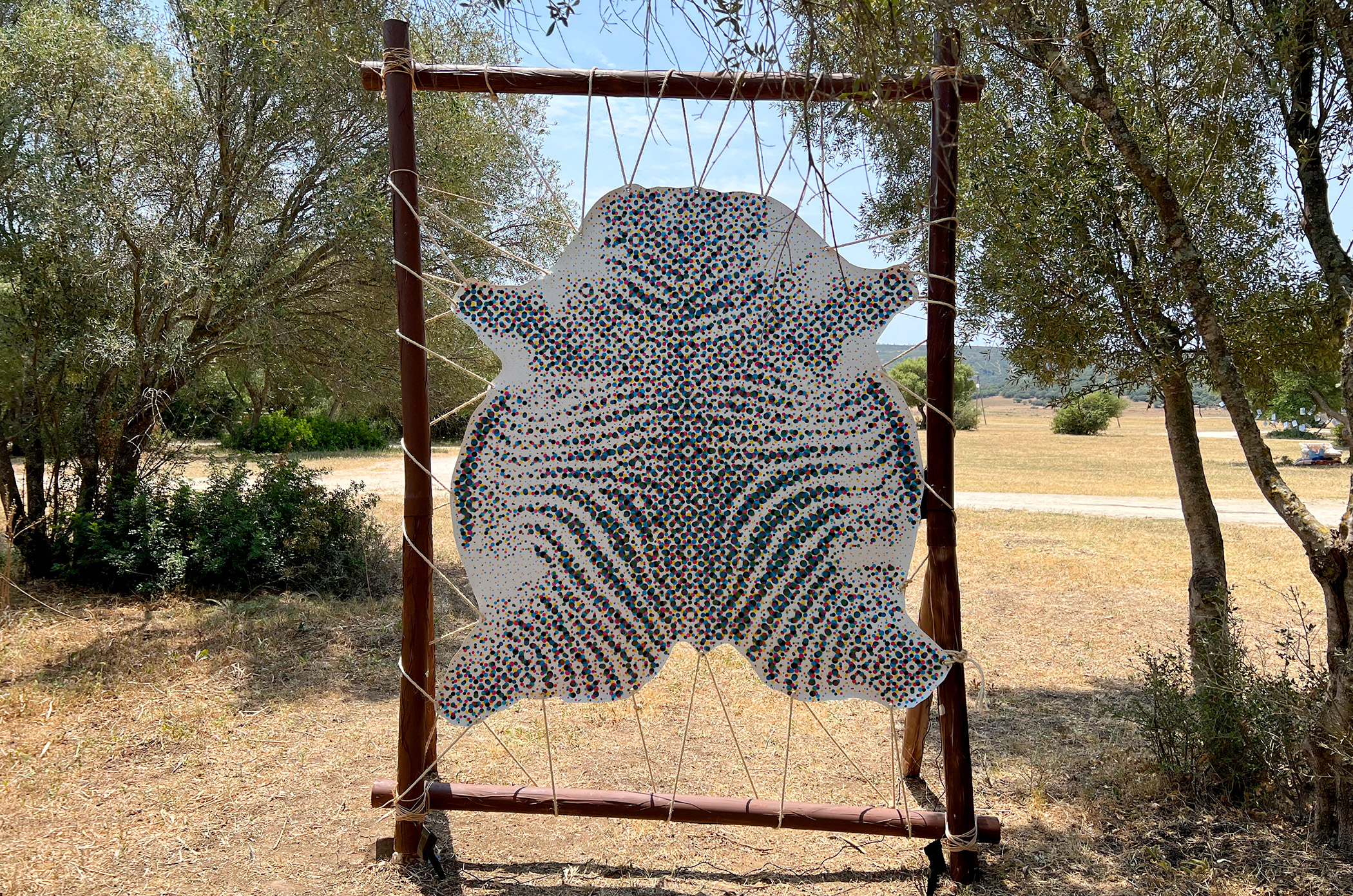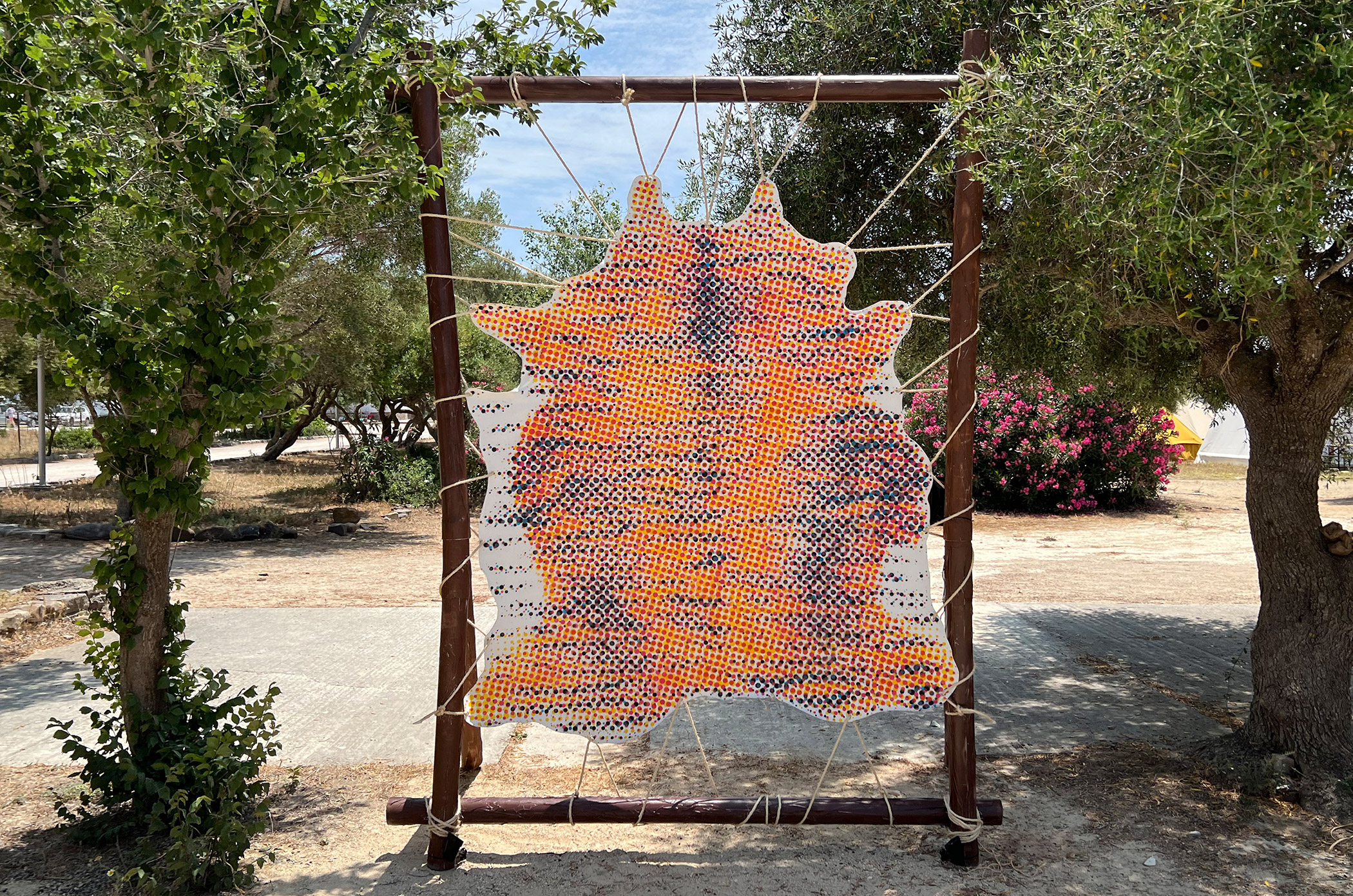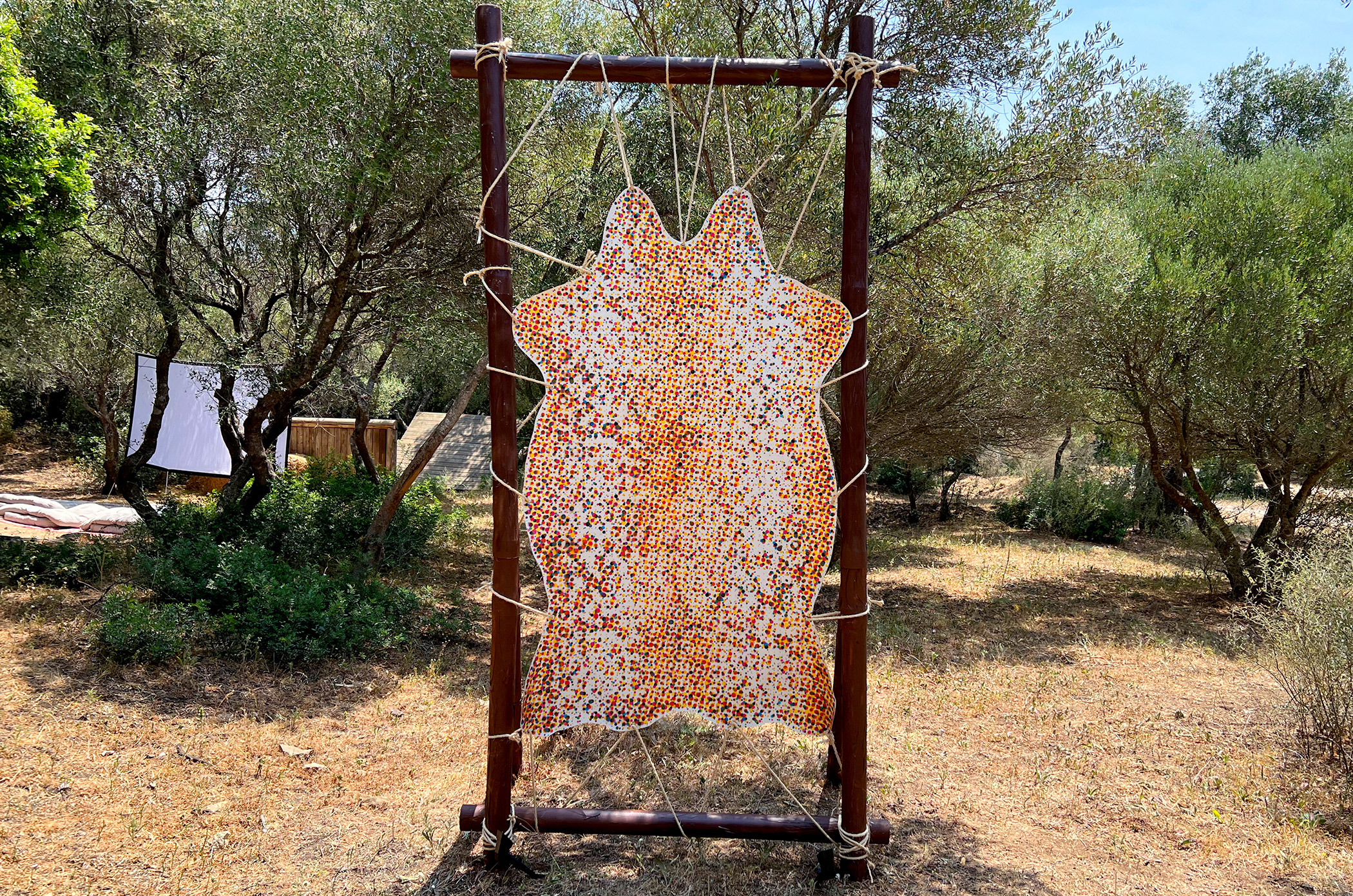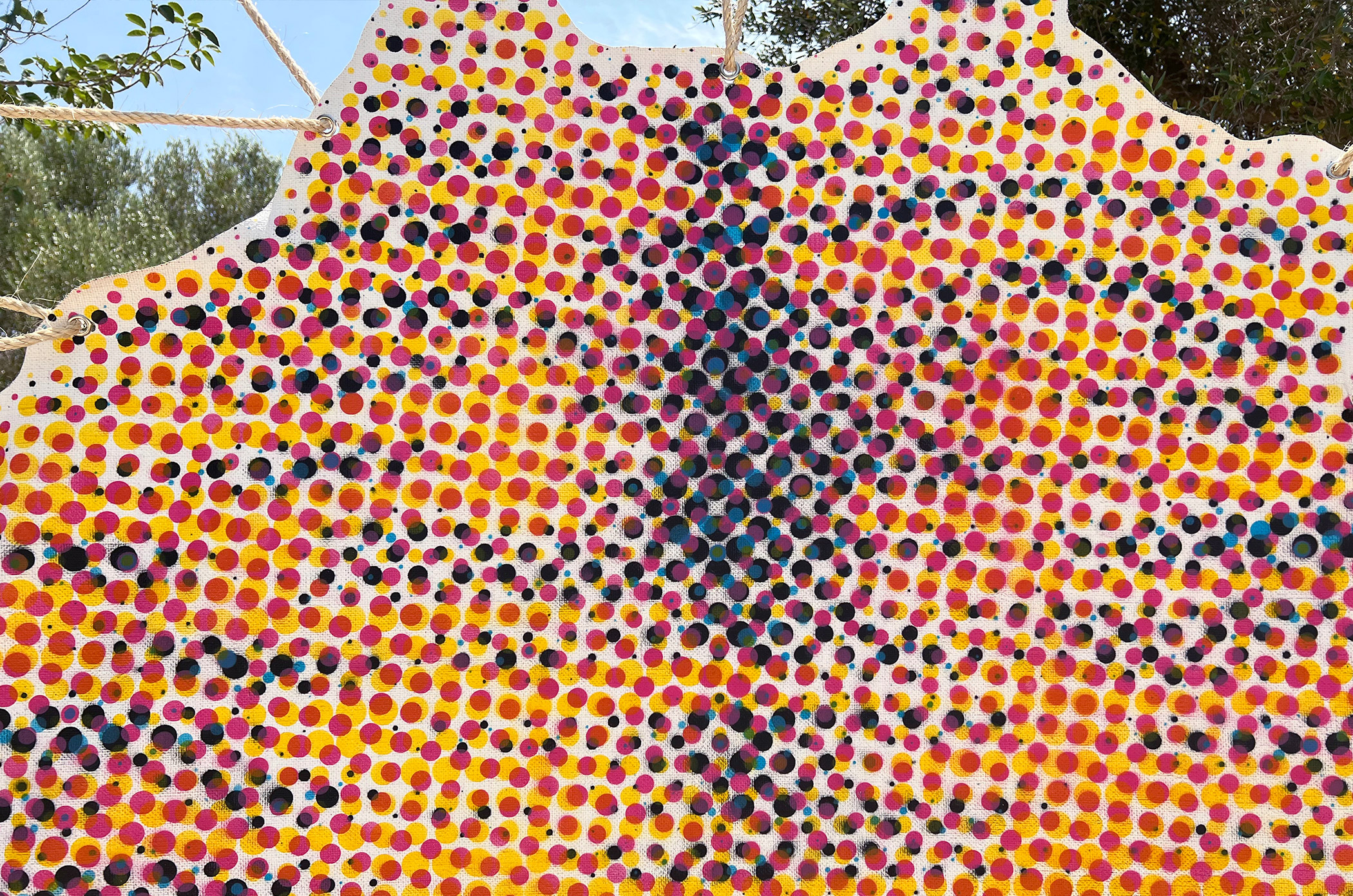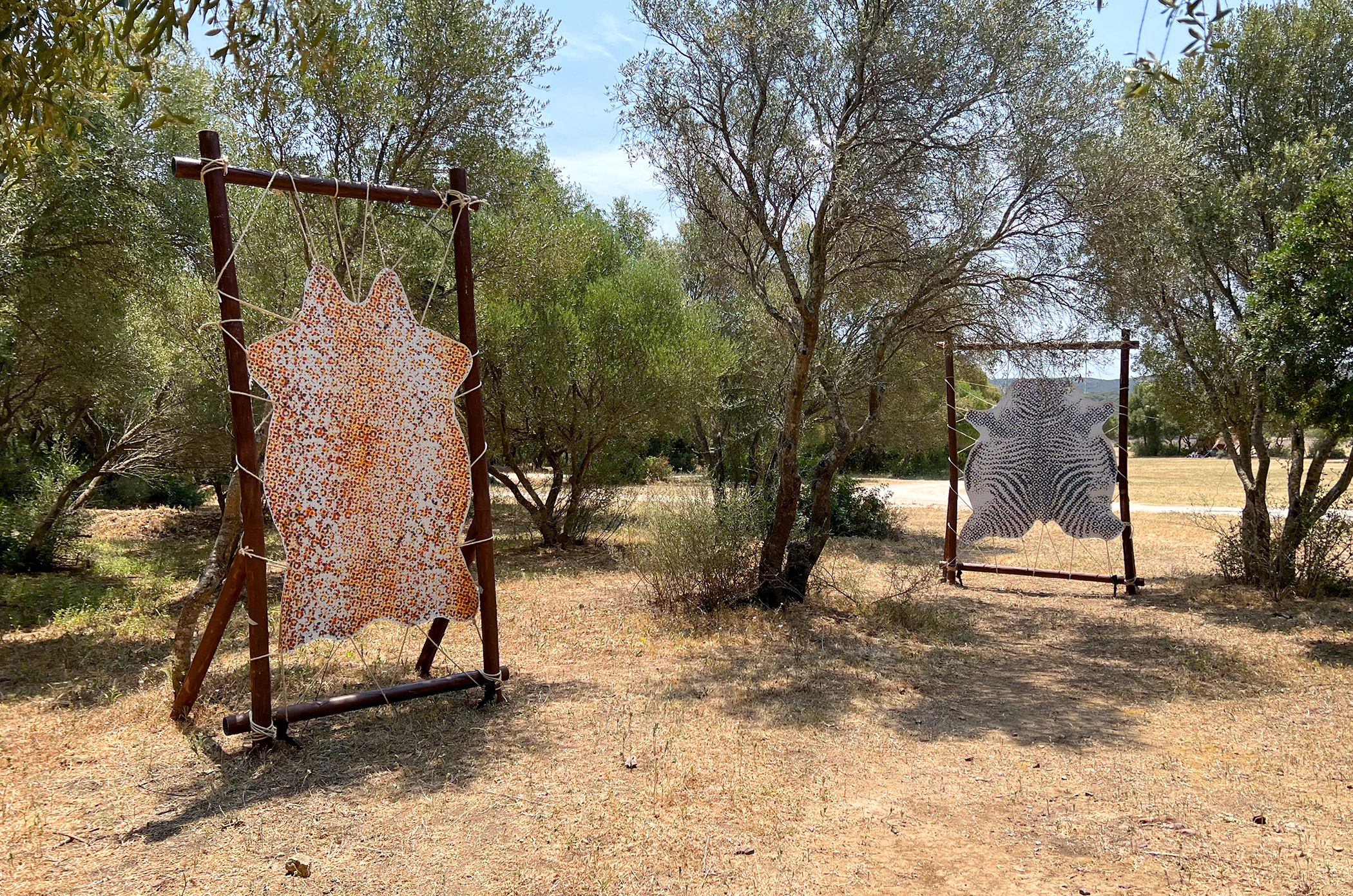
Overview
The installation for this WAKANA REUNION edition is a set that seeks to raise awareness about the importance of preserving nature and protecting endangered animal species.
The work is composed of four skin representations of endangered animals: the Bengal tiger, the cheetah, the Grévy’s zebra and the Sumatran tiger. It is no coincidence that the animals depicted were chosen, as each of them is a species currently in danger of extinction, which highlights the importance of preserving nature and the need to take measures to protect these species. The work is a social critique of poaching, the consumption of fur in the fashion and decoration industry, and the impact of humans on nature.
The pieces are spread out in different parts of Wakana Reunion, allowing viewers to enjoy a tour around the natural landscape and appreciate the pieces from different perspectives. In addition, being exposed outdoors and integrated into the natural environment, the work seeks to promote a connection between the viewer and nature, inviting to reflect about the importance of taking care of our environment and preserving biodiversity.In addition, being exposed outdoors and integrated into the natural environment, the work also seeks to foster a connection between the viewer and nature, inviting reflection on the importance of caring for our environment and preserving biodiversity.
Year
2023
Title
Skins
Location
Wakana Reunion, Spain

Bengal tiger
Currently, the tiger’s greatest enemy is humans. Illegal hunting for their skins and the destruction of their habitat have considerably reduced the tiger’s wild population.
It is estimated that at the beginning of the 20th century there were around 100,000 tigers in the wild, distributed from the Anatolian Peninsula to the island of Bali, while recently it has been estimated that the wild tiger population consists of just over 3,000 specimens.
While in captivity it is estimated that there are approximately 20,000.

Cheetah
There are several causes that have led the cheetah to become endangered, specifically, in a vulnerable state of extinction.
Hunting and clandestine animal trafficking are the main threats to the cheetah today.
On the other hand, in many countries cheetahs are luxury pets, so they are domesticated from cubs in countries such as Qatar or the United Arab Emirates, or used for hunting, following ancient traditions.
Approximately 90% of the cheetahs’ original territory has been destroyed.

Grévy's zebra
Grevy’s zebra is particularly vulnerable, as only a few hundred individuals are known to exist in the wild.
This species is currently endangered due to multiple threats, such as the destruction of its natural habitat by overgrazing by domestic livestock and water scarcity. Its main predators are the lion, cheetah, hyena, leopard and African wild dogs.
Some of the threats they face include habitat degradation and loss induced by overgrazing by livestock, competition with access to water and pasture for food, local hunting for meat for medicinal and cultural purposes, inter-species hybridization and predation.

Sumatran tiger
Currently, the tiger’s greatest enemy is humans. Illegal hunting for their skins and the destruction of their habitat have considerably reduced the tiger’s wild population.
It is estimated that at the beginning of the 20th century there were around 100,000 tigers in the wild, distributed from the Anatolian Peninsula to the island of Bali, while recently it has been estimated that the wild tiger population consists of just over 3,000 specimens.
While in captivity it is estimated that there are approximately 20,000.
